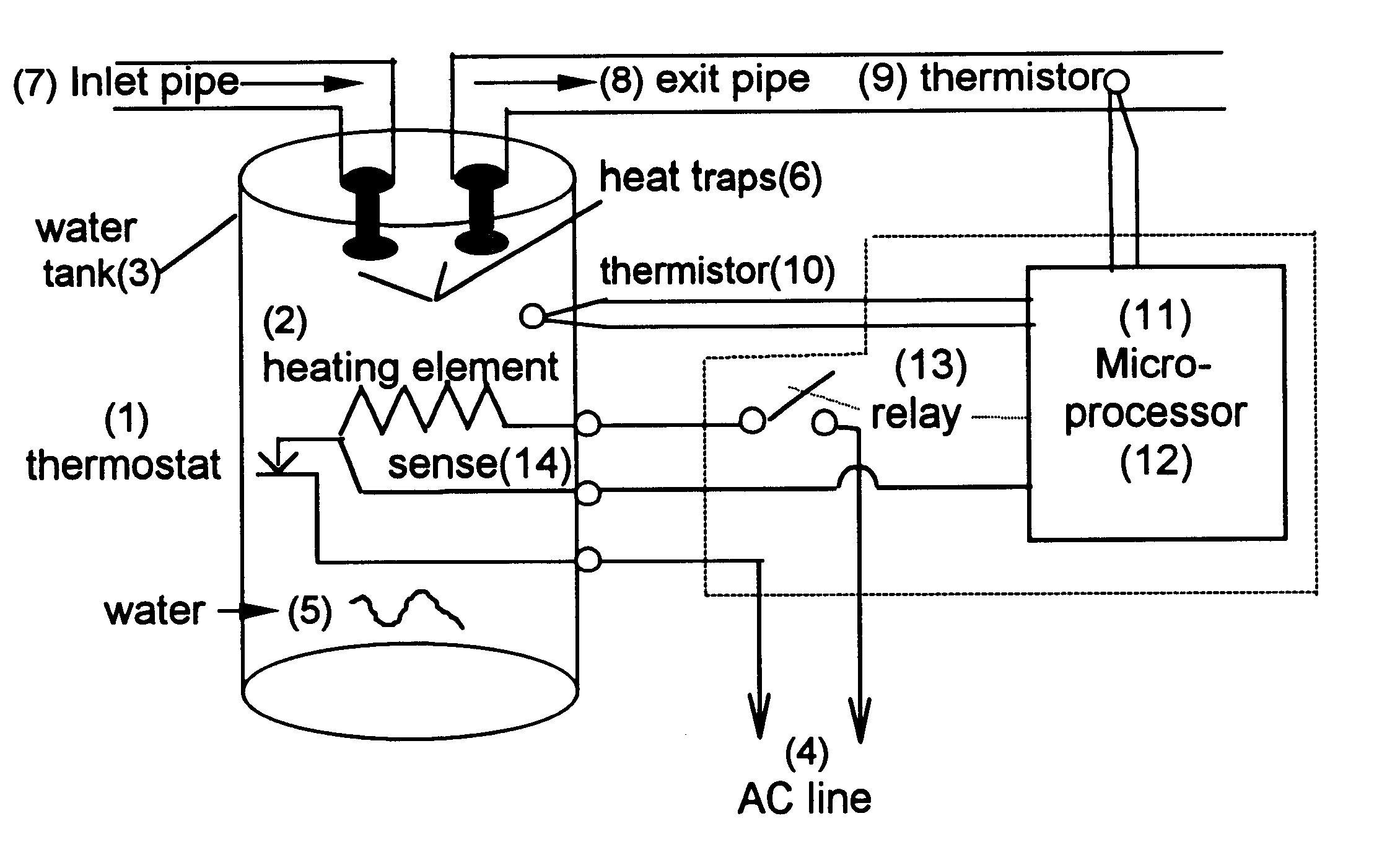Heater control device and method to save energy
a control device and heating device technology, applied in the direction of lighting and heating equipment, process and machine control, instruments, etc., can solve the problems of significant environmental energy loss, no a priori knowledge of the present or future need for hot water, and portion of energy that must be restored is not saved
- Summary
- Abstract
- Description
- Claims
- Application Information
AI Technical Summary
Problems solved by technology
Method used
Image
Examples
Embodiment Construction
.
An electric hot water heater is typically provided with a prior art thermostatic control (1) and a prior art heating element (2) which heats water in a contained vessel (3), such as a cylindrical tank. An electric current (4) is allowed to flow through the heating element (2) by the thermostatic control (1) which is usually operated by a bi-metallic contact which closes when the temperature of the surrounding water (5) is below the thermostat's "set" temperature and which opens when the temperature of the surrounding water is above the thermostat's "set" temperature. Generally, such controls are subject to hysteresis which allows the water temperature to deviate from the set value by .+-.5.degree. F. or .+-.10.degree. F. Thermostat "set" temperatures are typically between 120.degree. F. and 180.degree. F. The modem water heater is often fitted with prior art "heat-trap" devices (6), such as an anti-flow valve fitted to an insulating plastic pipe, which provide a thermal barrier to ...
PUM
| Property | Measurement | Unit |
|---|---|---|
| temperatures | aaaaa | aaaaa |
| temperatures | aaaaa | aaaaa |
| temperature | aaaaa | aaaaa |
Abstract
Description
Claims
Application Information
 Login to View More
Login to View More - R&D
- Intellectual Property
- Life Sciences
- Materials
- Tech Scout
- Unparalleled Data Quality
- Higher Quality Content
- 60% Fewer Hallucinations
Browse by: Latest US Patents, China's latest patents, Technical Efficacy Thesaurus, Application Domain, Technology Topic, Popular Technical Reports.
© 2025 PatSnap. All rights reserved.Legal|Privacy policy|Modern Slavery Act Transparency Statement|Sitemap|About US| Contact US: help@patsnap.com



